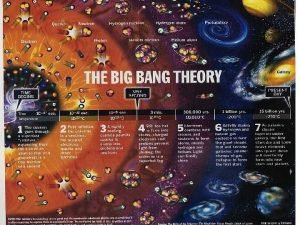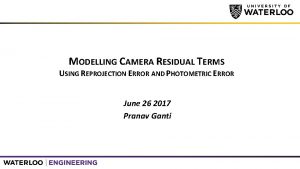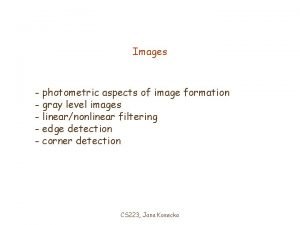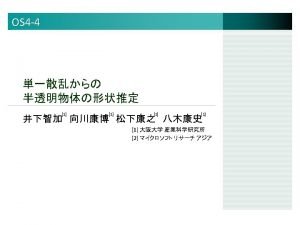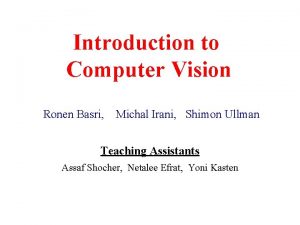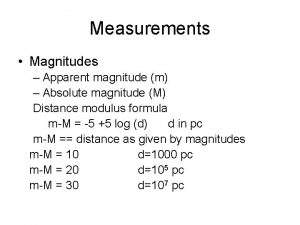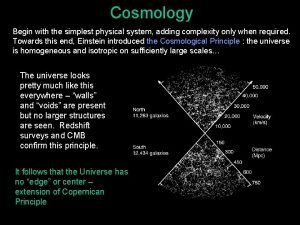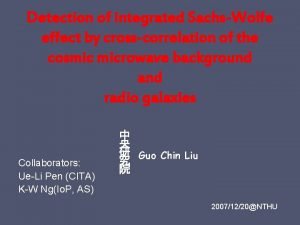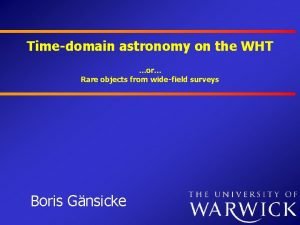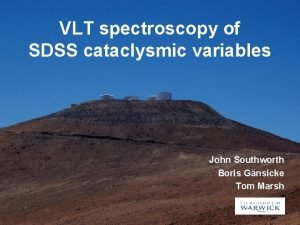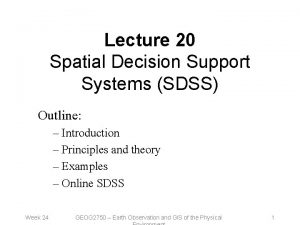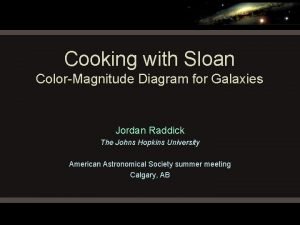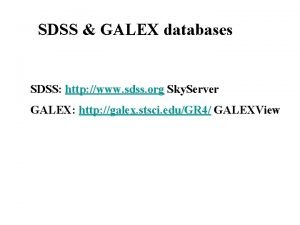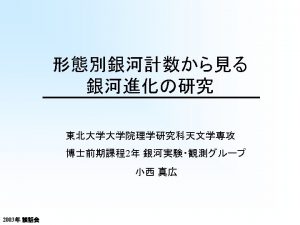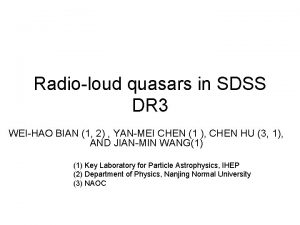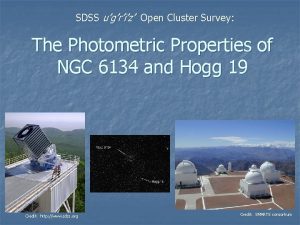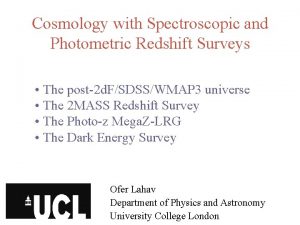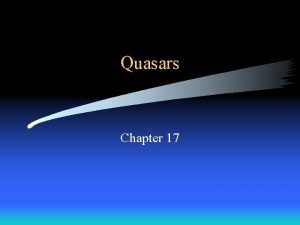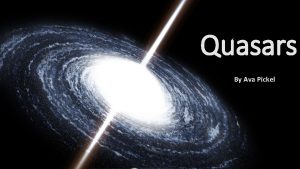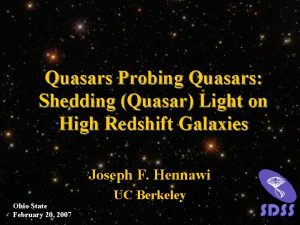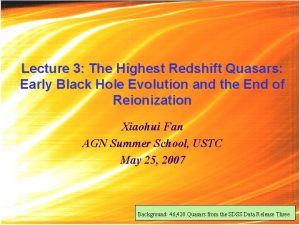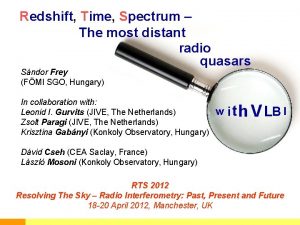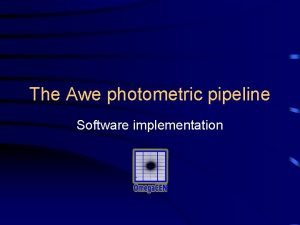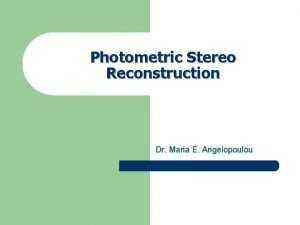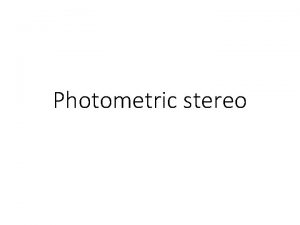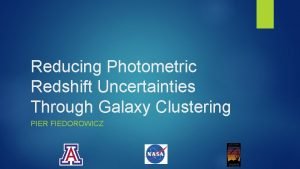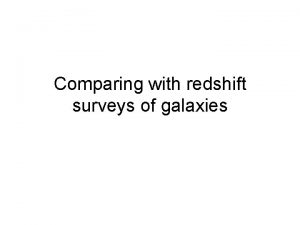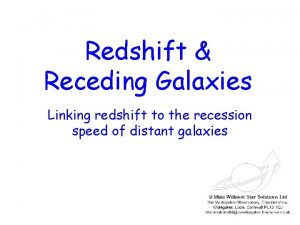Redshift Estimation and Photometric Classification of SDSS Quasars



















- Slides: 19

Redshift Estimation and Photometric Classification of SDSS Quasars Nathan Steinle UTD Physics Department

SDSS J 1106+1939 Twinkle, twinkle, quasi-star, Biggest puzzle from afar. How unlike the other ones, Brighter than a trillion Suns. Twinkle, twinkle, quasi-star, How I wonder what you are! - George Gamow Exploring the Cosmos, Louis Berman, Ch. 14, pg. 311, 1973 https: //scitechdaily. com/scientists-discover-the-most-powerful-quasar-outflow-ever/

• Quasars are the most active galactic nucleus (very high luminosity) • Nowadays, very large data sets: Ø Advanced Statistics Ø Big Data Ø Machine Learning Centaurus A http: //math. ucr. edu/home/baez/doomed. html

Roadmap • Dataset: SDSS Quasar Catalog Tenth Release • Random Forest to estimate redshifts using photometric data Ø which inputs are most important? • Use Self-Organizing Map for photometric classification Ø how are the quasars related by their photometry?

http: //iopscience. iop. org/article/10. 1088 /0004 -637 X/712/1/511/pdf

Photo-z Regression u g r i z Spec-z ↓ ↓ ↓ Quasar 1 Quasar 2 Quasar 3 I. Split quasars into 6 bins according to redshift: 0 – 1. 95 1. 95 – 2. 34 2. 34 – 2. 63 2. 63 – 3. 5 3. 5 – 4. 5 4. 5 – 7. 11 Ø In each bin, have training set and indep. testing set. II. Iterative error-reduction truth vs estimate scatter diagrams Spec-z Photo-z III. Ranking of inputs by relative importance


Bin 1

Bin 1

Bin 2

Bin 2

1) IF we look at the first four bins (equal size N = 40, 000), we expect them to have different “most important band” (m. i. b. )

1)

2) We can use high emission lines to guide expectation for most important band (m. i. b. ) In rest frame (lab) Lyα emission line is at 1215. 67 Å Cosmological redshift: This means I expect to observe the Lyα line in the r band http: //classic. sdss. org/gallery/gal_spectra. html Z = 4. 16 quasar

2) For a given bin, have range of redshift and corresponding wavelength range we expect to find Lyα Bin # Z-spec range Expected Lyα range (Å) Expected m. i. b. Calculated m. i. b. 1 0 – 1. 95 1215 – 3587 u u 2 1. 95 – 2. 34 3587 – 4061 u/g u 3 2. 34 – 2. 63 4061 – 4416 g u 4 2. 63 – 3. 5 4416 – 5470 g u 5 3. 5 – 4. 5 5470 – 6686 g/r g 6 4. 5 – 7. 01 6686 - 9738 i i

Outliers Exp. m. i. b. = g Calc. m. i. b. = u

Classification • Unsupervised classification: Ø Self-Organizing Map classifies objects by photometry into minimum number of classes

Plot of r vs u bands All other bands produce similar structure

Thank you for listening!
 Geometric and photometric image formation
Geometric and photometric image formation Big bang solar system
Big bang solar system Photometric reprojection error
Photometric reprojection error Photometric image formation
Photometric image formation Photometric stereo
Photometric stereo Photometric stereo
Photometric stereo Redshift formula
Redshift formula Redshift shared nothing
Redshift shared nothing Cosmological redshift equation
Cosmological redshift equation Redshift deadlock detected
Redshift deadlock detected Aws sqs queue icon
Aws sqs queue icon Redshift create index
Redshift create index Sdss 1035+0551 distance
Sdss 1035+0551 distance Sdss 1035
Sdss 1035 Sdss in gis
Sdss in gis Yrdsb.elearning
Yrdsb.elearning Jordan sloan
Jordan sloan Manifold table in statistics
Manifold table in statistics Advantages of glucose oxidase method slideshare
Advantages of glucose oxidase method slideshare Dwf and wwf
Dwf and wwf

